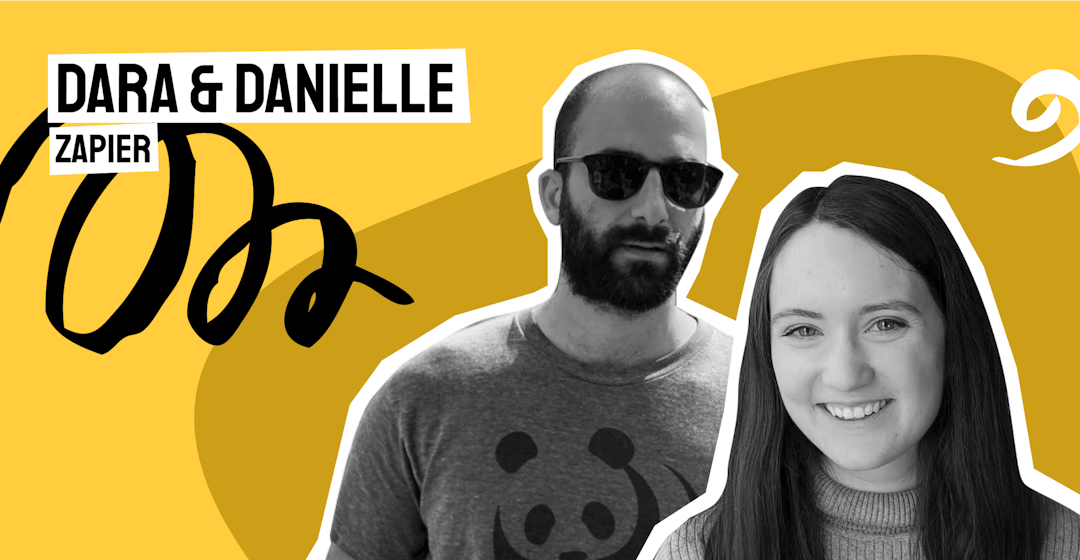
To Increase Top Performance, You Must First Define It: A Lesson From Zapier's L&D and Ops Partnership
To increase ‘top performance’, you first have to define ‘top performance’.
This was the driving idea behind a recent innovative project piloted by Zapier’s L&D professionals Dara and Danielle.
Zapier is a leading automation solution for SMBs. Like many successful scale-ups, one of the company’s goals is to continue their impressive growth, by “building a diverse and high-performing global organization.” But the devil is in the details. While Dara and Danielle had a good idea of what was meant by ‘diverse’ and ‘global’, there was no company-wide consensus on what ‘high-performing’ referred to.
Without an agreed-upon framework for performance appraisal, it would be difficult for Learning and Development to help Zapier’s teams achieve their best results. That’s when Dara and Danielle got to work—and we had the pleasure of getting a behind-the-scenes explanation of how they tackled this challenge during the latest episode of L&D Plus.
Saving the episode for later? We’ve distilled their main steps for success below:
Define your deliverables
Dara and Danielle had a goal—define what ‘high-performance’ looked like at Zapier. Their next step was to determine the deliverables to match. They landed on two:
- Develop a framework to help define high performance at Zapier
- Distill a short team self-assessment tool based on that framework
The framework would get everybody on the same page about what it meant to be a high-performing team. The self-assessment tool would then let individuals benchmark how they thought their team stacked up according to these criteria.
This framework and assessment gives Zapier's teams this new tool to openly discuss what is and isn't working for them. If teams get good at behaviors like estimating workload, or aligning upfront on priorities, they're way more likely to effectively meet their goals as a team.
The crucial first step was to make sure this framework reflected how teams were feeling and thinking about performance at Zapier—their framework needed to be company-specific, not a one-size-fits-all template.
For this, the duo decided to put in some time and conduct a series of hour-long interviews—60 in total—to get inside the minds of their fellow Zapier teammates. They used some set questions like, ‘What’s an example of collaboration going well for your team?’ to get things going, and used follow-up inquiries to dig deeper. They then pored over their notes to tease out common themes they could use to build a performance framework.
When we did these interviews, we took a lot of notes. In fact, we took verbatim notes. We spent a lot of time trying to figure out, what were the key points that these folks were trying to make here?
Though it was time-consuming (and somewhat painstaking), this first-hand material was a goldmine of information. But in order for their colleagues to share valuable insights and pain-points, Dara and Danielle needed to enforce a strict confidentiality policy regarding their conversations.
Create a safe environment
Dara and Danielle established and communicated a strict and clearly defined confidentiality statement. They needed their colleagues to put their trust in them, and nobody outside the duo has or will see their interview notes—even if that means some of the issues raised during their conversations won’t be directly addressed. This creates the kind of psychological safety needed to get honest, constructive feedback.
Another key ingredient to gain buy-in for putting this project together? Make it really, really easy to participate.
There's only two people who have seen the notes that we took, just Danielle and I. Our boss, the ops department head: no one else has seen the notes that we've taken.
Apply the ‘don’t make me think’ principle
The elaboration and deployment of this framework and self-assessment tool had to be a collaborative effort. Dara and Danielle needed teams’ input for the interviews, but also to run the self-assessment workshops afterward. They would need to recruit facilitators to advertise and run sessions where teams would fill out their short self-assessment—and then of course, nudge stakeholders to act on those findings.
Considering everyone’s busy schedule, the duo needed to limit any friction involved in participating. Luckily, Zapier is a leading automation solution built for just that purpose. By setting up a series of ‘Zaps’ (automated workflows), the team could eliminate almost all manual tasks, like signing participants up for the self-assessment workshops on Slack. As Dara explained,
“The mantra for the facilitators is give me the room I need to think. That's what we've tried to do. Almost everything you can think of besides doing the actual facilitation and creating the workshop is automated.”
And even the facilitation of the meetings didn’t fall entirely on participants’ shoulders. Dara and Danielle whipped up a handy two-page guide—a sort of cheat sheet—to help facilitators lead the self-assessment workshops. They even received an additional ‘action guide’, that would help them prioritize their notes from the session and support them in taking actionable next steps.
All in all, as Danielle explained, “We really do our best as a team to follow this user experience principle of don't make me think.”
A collaborative playbook for top performance at Zapier
Without a doubt, Dara and Danielle’s initiative was a hit. For the research phase of the project (the interviews), they managed to talk to 17% of the company. As for the assessment phase, nearly a third of the entire business has already completed one—and a whopping 41 of Zapier’s leaders have shown interest in doing so. When it comes to rallying an entire company around a shared vision for defining and expanding high performance, Dara and Danielle have written the playbook.
For more inspiring and actionable L&D stories like this one, be sure to check out other episodes of L&D Plus.


